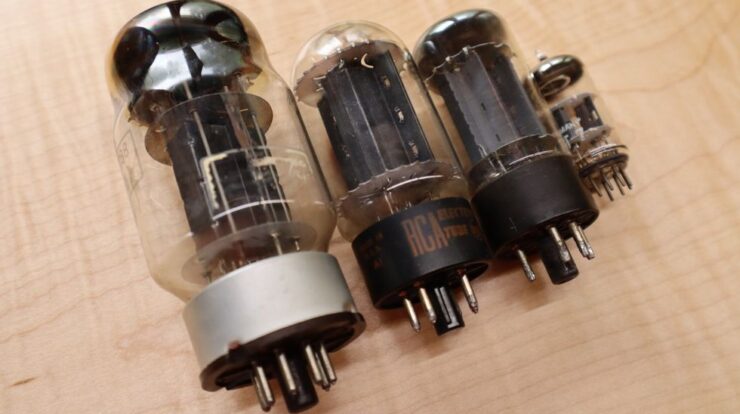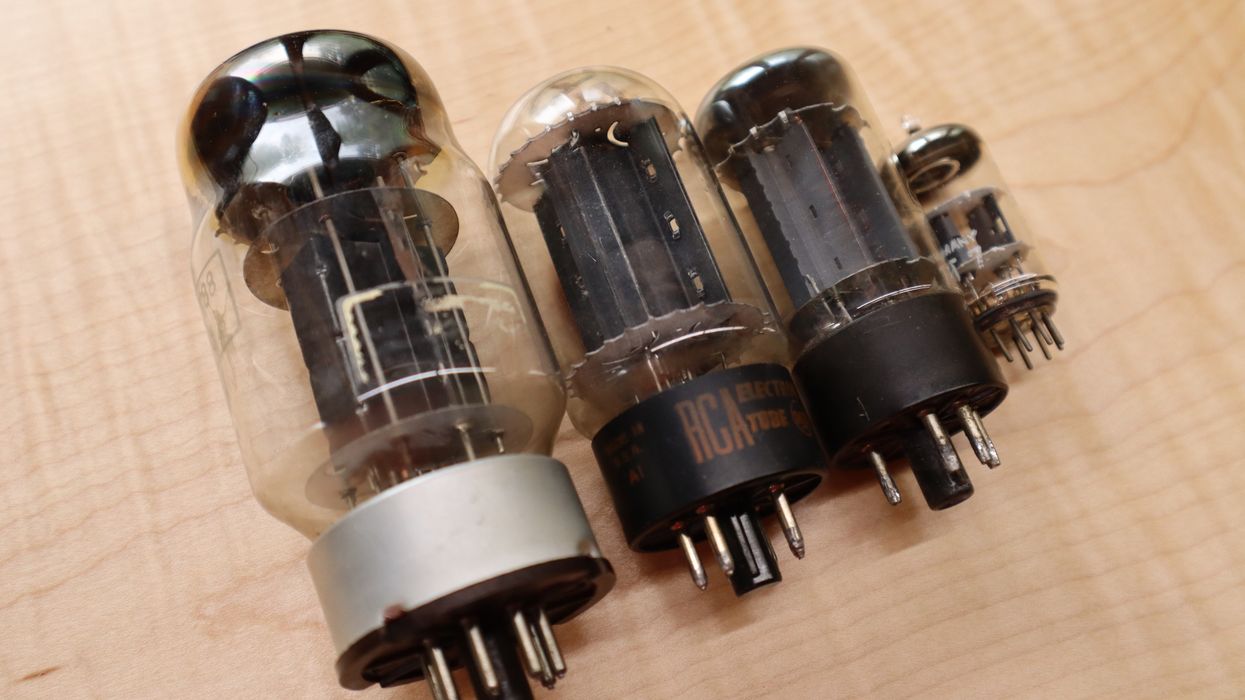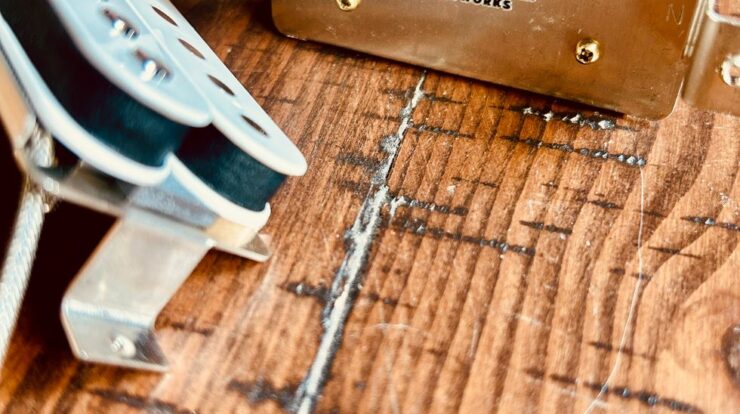

If you’ve never worked on a tube amp, it can be hard to find your way into understanding how they work. Somehow, we create a tiny signal by making metal strings on our guitars oscillate over a magnet wrapped with a coil of wire, and our amp takes that electrical signal and gets it to drive a speaker. (And driving the speaker is basically the opposite of how the signal started: It is a coil of wire moving within a magnet, which drives a speaker cone that moves air.) I’d like to simplify some of the processes that go on in our amps, so even if you’re not an expert, you’ll have some idea of what’s going on.
Let’s look at how tubes work and the role they play in turning our quiet, tiny guitar signals into sound. There are various types of vacuum tubes, but in the guitar amp world, three types are most common: rectifier tubes, preamp tubes, and power amp tubes.
Let’s start with rectifier tubes. As part of an amp’s power supply—the part of the amplifier circuit that makes the voltages the rest of the circuit needs to operate—rectifier tubes help convert, or “rectify,” the AC (alternating current) from the wall into DC (direct current). The amp’s power transformer only runs on AC, so it’s up to the rectifier tube to create DC, which is needed by the other tubes. (The filter capacitors are also part of the power supply, and these are needed to make proper DC from rectified AC, as well as a “choke” transformer.) The tubes that we use in this part of our amp are specialty tubes designed to do this one particular task and are not interchangeable with preamp and power amp tubes.
“The small guitar signal creates electrical movement on the screen of the tube, which causes movement on the plate, which gets significantly amplified due to its high-voltage potential.”
The preamp section’s job is to take the delicate signal from the guitar and amplify it to a level that can drive the output section. This is done in stages because of how small the guitar signal is, which is why we have many 12AX7-type tubes in our amps. Here’s how preamp tubes function:
Typically, V1 (valve 1—this is not a specific part on a schematic in this article but refers to the first tube the guitar signal encounters) will take that delicate guitar signal and amplify it by about 100 times before we do anything with it in the amp. This process repeats in the other preamp tube positions as well. How does a tube make a signal 100 times bigger? The V1 tube has about 300V DC on its plate (and a few volts on the cathode, but I don’t want to get too technical here and explain that—let’s just say that’s part of the operation of the tube). The small guitar signal creates electrical movement on the screen of the tube, which causes movement on the plate, which gets significantly amplified due to its high-voltage potential.
Because these are still small signals, the tubes are small. A 12AX7-type tube has two sections. In this case, V1 can also be used as a second gain stage or the first stage for another channel input of the amp.
Power tubes are bigger. There’s only a single stage inside the glass. Why? Because they do more work. They are the horsepower of the amplifier. They need to drive the output transformer, which pushes that speaker cone to move air. The overall function is the same but with a higher potential. In the power tube’s case, it’s usually 400–500V DC. More voltage means more power available. When we create electrical response on the power tubes with our signal, we get that analog response on the plates. Those plates are connected to an output transformer. The output transformer does what its name states by transforming the signal on the primary side (the power tube side) to what is on the secondary side, which is the speaker.
The power tubes need that high-voltage DC to operate, but a speaker only wants 10–30V AC to rock our world. The output transformer separates the AC guitar signal from the DC power supply. Again, there’s a bit more to this, but the power tubes are coupled to the speaker, driving that speaker and doing the hard work of moving air.
You might not be ready to go repair your amp, but hopefully, you now have a better idea of how your tubes work.




